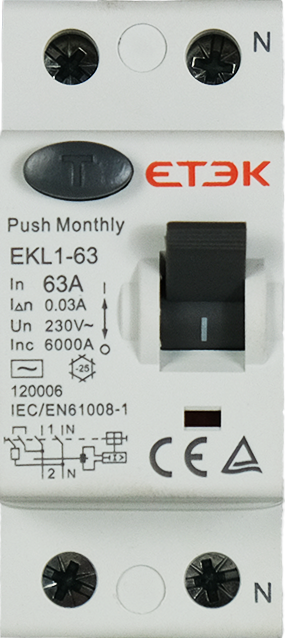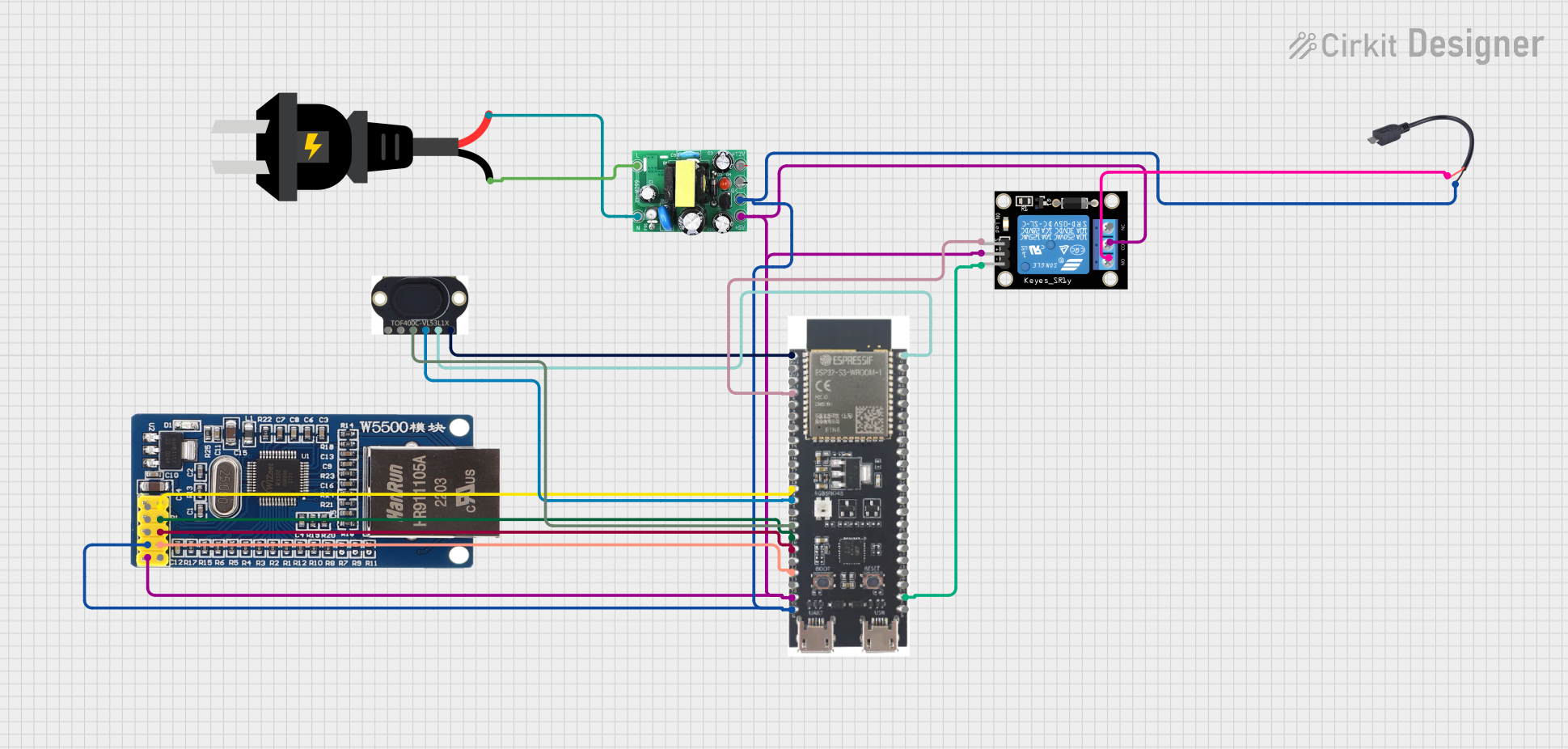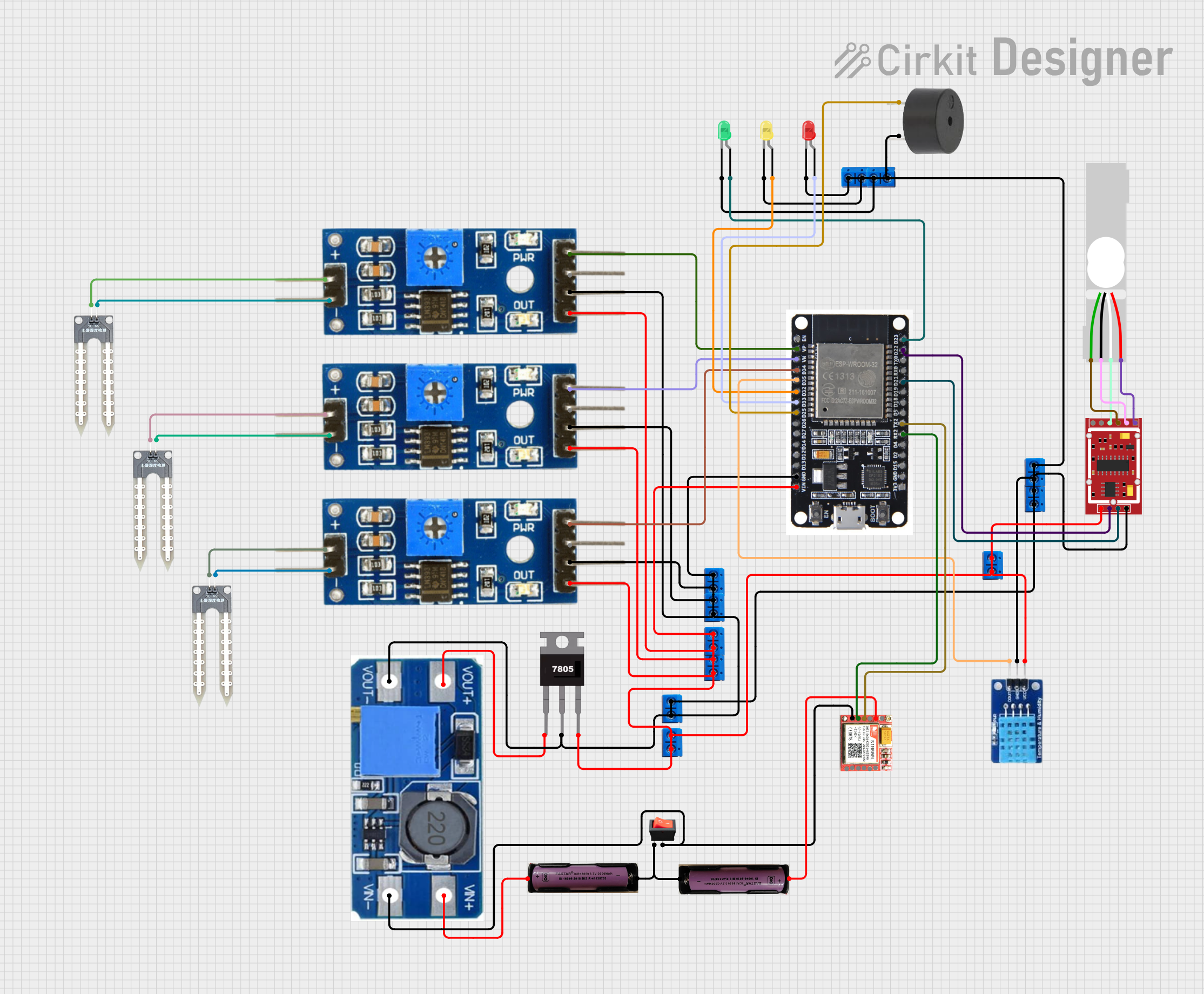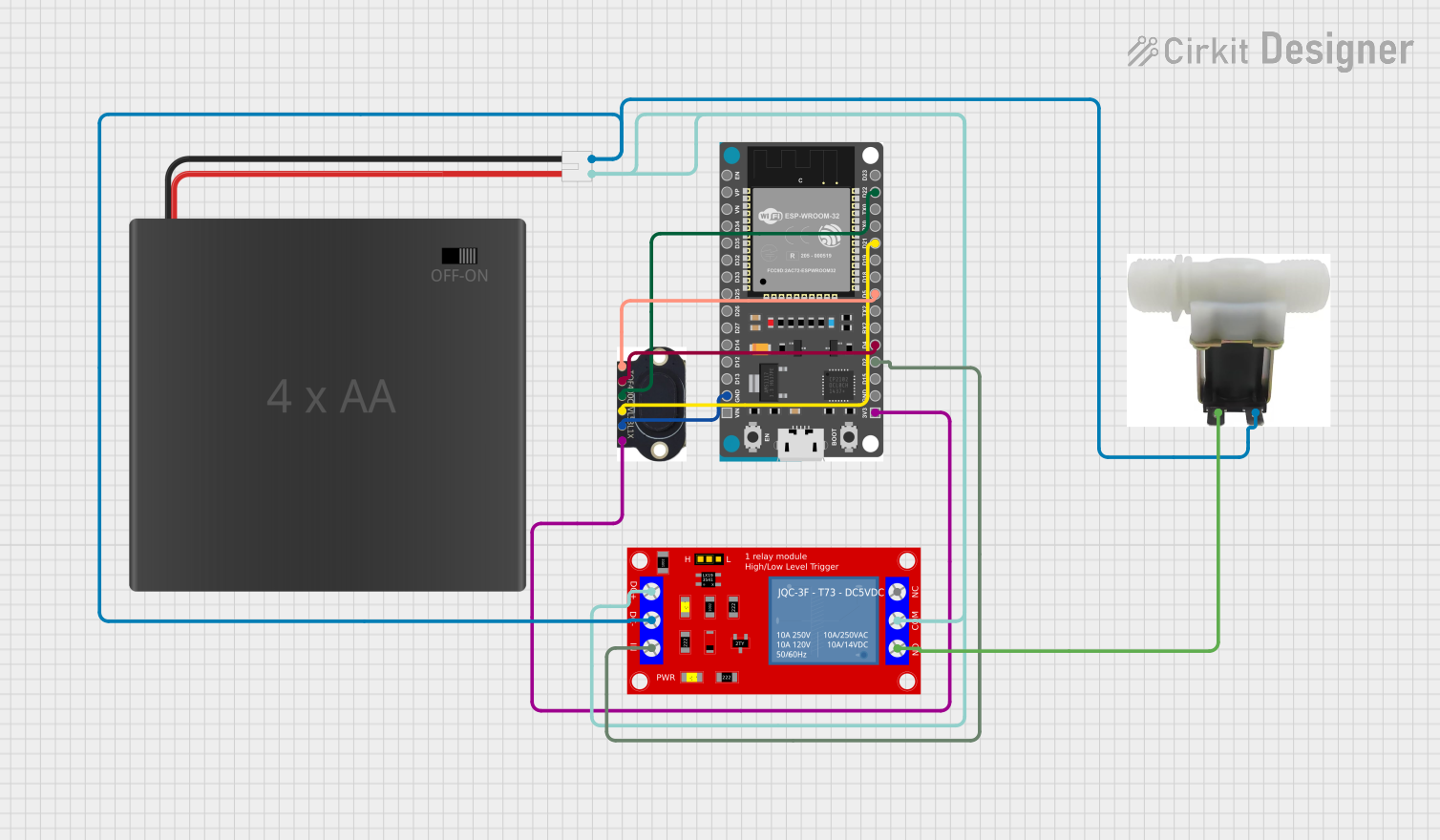
How to Use Earth Leakage ELK1-63: Examples, Pinouts, and Specs

 Design with Earth Leakage ELK1-63 in Cirkit Designer
Design with Earth Leakage ELK1-63 in Cirkit DesignerIntroduction
The Earth Leakage ELK1-63, manufactured by ETEK, is a specialized circuit breaker designed to protect electrical systems from earth faults. It operates by detecting leakage currents that may occur due to insulation failures or accidental contact with live conductors. When a leakage current exceeds a predefined threshold, the ELK1-63 disconnects the circuit, preventing potential electric shocks and fire hazards.
Explore Projects Built with Earth Leakage ELK1-63

 Open Project in Cirkit Designer
Open Project in Cirkit Designer
 Open Project in Cirkit Designer
Open Project in Cirkit Designer
 Open Project in Cirkit Designer
Open Project in Cirkit Designer
 Open Project in Cirkit Designer
Open Project in Cirkit DesignerExplore Projects Built with Earth Leakage ELK1-63

 Open Project in Cirkit Designer
Open Project in Cirkit Designer
 Open Project in Cirkit Designer
Open Project in Cirkit Designer
 Open Project in Cirkit Designer
Open Project in Cirkit Designer
 Open Project in Cirkit Designer
Open Project in Cirkit DesignerCommon Applications and Use Cases
- Residential and commercial electrical installations
- Industrial machinery and equipment
- Protection of sensitive electronic devices
- Prevention of electrical fires caused by insulation failures
- Ensuring safety in wet or damp environments, such as bathrooms and kitchens
Technical Specifications
The following table outlines the key technical details of the Earth Leakage ELK1-63:
| Parameter | Value |
|---|---|
| Manufacturer | ETEK |
| Part ID | ELK1-63 |
| Rated Voltage | 230/400V AC |
| Rated Current | 16A, 25A, 32A, 40A, 63A (varies by model) |
| Rated Frequency | 50/60 Hz |
| Rated Residual Current | 30mA, 100mA, 300mA (varies by model) |
| Breaking Capacity | 6kA |
| Number of Poles | 2P (single-phase) or 4P (three-phase) |
| Operating Temperature | -5°C to +40°C |
| Mounting Type | DIN Rail |
| Compliance Standards | IEC/EN 61008-1 |
Pin Configuration and Descriptions
The ELK1-63 has input and output terminals for connecting to the electrical circuit. The table below describes the terminal configuration:
| Terminal | Description |
|---|---|
| L (Line In) | Connects to the live input from the power source |
| N (Neutral In) | Connects to the neutral input from the power source |
| L (Line Out) | Connects to the live output to the load |
| N (Neutral Out) | Connects to the neutral output to the load |
For the 4-pole version, additional terminals are available for three-phase connections.
Usage Instructions
How to Use the ELK1-63 in a Circuit
- Mounting: Install the ELK1-63 on a standard DIN rail in the distribution box.
- Wiring:
- Connect the live and neutral input wires from the power source to the
L (Line In)andN (Neutral In)terminals, respectively. - Connect the live and neutral output wires to the
L (Line Out)andN (Neutral Out)terminals, respectively. - For three-phase systems, connect the additional live wires to the corresponding terminals.
- Connect the live and neutral input wires from the power source to the
- Testing:
- Use the built-in test button to verify the functionality of the device. Pressing the test button should trip the breaker, simulating a leakage current.
- Resetting:
- After a trip, inspect the circuit for faults. Once resolved, reset the breaker by toggling the switch to the "ON" position.
Important Considerations and Best Practices
- Ensure the rated current and residual current of the ELK1-63 match the requirements of your circuit.
- Regularly test the device using the test button to confirm proper operation.
- Avoid overloading the circuit, as this may cause nuisance tripping.
- For outdoor or damp environments, use weatherproof enclosures to protect the device.
- Always disconnect the power supply before installation or maintenance.
Arduino Integration
While the ELK1-63 is not directly compatible with Arduino, it can be used in conjunction with an Arduino-based monitoring system. For example, you can use a current sensor (e.g., ACS712) to monitor the load current and detect when the ELK1-63 trips. Below is an example Arduino code snippet for monitoring current:
// Include necessary libraries
const int sensorPin = A0; // Analog pin connected to the current sensor
float sensitivity = 0.185; // Sensitivity of ACS712 (e.g., 185mV/A for 5A model)
float offsetVoltage = 2.5; // Offset voltage at 0A (for 5V supply)
void setup() {
Serial.begin(9600); // Initialize serial communication
}
void loop() {
int sensorValue = analogRead(sensorPin); // Read sensor value
float voltage = (sensorValue / 1023.0) * 5.0; // Convert to voltage
float current = (voltage - offsetVoltage) / sensitivity; // Calculate current
// Print current to the serial monitor
Serial.print("Current: ");
Serial.print(current, 2); // Print with 2 decimal places
Serial.println(" A");
delay(1000); // Wait for 1 second
}
Troubleshooting and FAQs
Common Issues and Solutions
The ELK1-63 trips frequently without an apparent fault:
- Check for overloading or high inrush currents in the circuit.
- Verify that the residual current rating matches the application.
The test button does not trip the breaker:
- Ensure the device is properly connected to the power supply.
- If the issue persists, the device may be faulty and require replacement.
The breaker does not reset after tripping:
- Inspect the circuit for faults or leakage currents.
- Ensure the breaker is not damaged or obstructed.
Nuisance tripping in damp environments:
- Use weatherproof enclosures to protect the device from moisture.
- Check for insulation degradation in the wiring.
FAQs
Q: Can the ELK1-63 be used in three-phase systems?
A: Yes, the 4-pole version of the ELK1-63 is designed for three-phase systems.
Q: How often should the test button be used?
A: It is recommended to test the device monthly to ensure proper operation.
Q: What happens if the rated current is exceeded?
A: The ELK1-63 is primarily designed to detect leakage currents. For overcurrent protection, use a separate circuit breaker in conjunction with the ELK1-63.
Q: Can the ELK1-63 protect against short circuits?
A: No, the ELK1-63 is not designed for short-circuit protection. Use a dedicated MCB (Miniature Circuit Breaker) for this purpose.